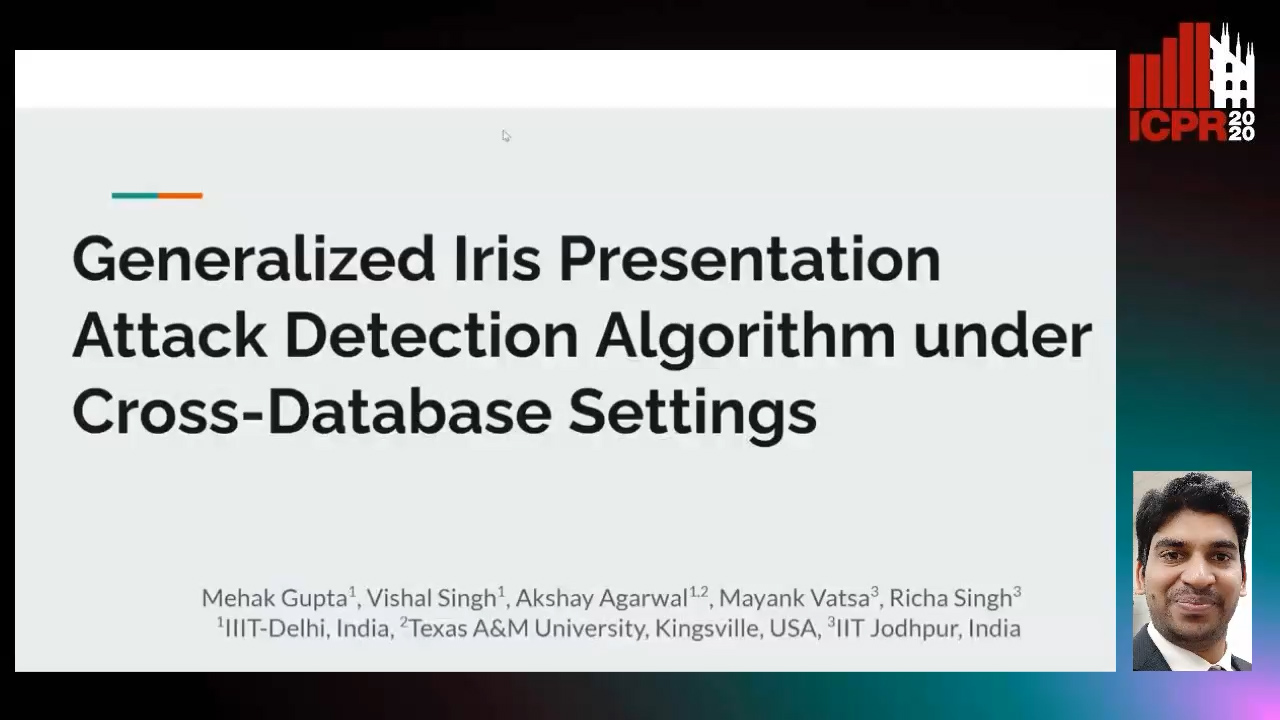Vishal Singh
Paper download is intended for registered attendees only, and is
subjected to the IEEE Copyright Policy. Any other use is strongly forbidden.
Papers from this author
Generalized Iris Presentation Attack Detection Algorithm under Cross-Database Settings
Mehak Gupta, Vishal Singh, Akshay Agarwal, Mayank Vatsa, Richa Singh

Auto-TLDR; MVNet: A Deep Learning-based PAD Network for Iris Recognition against Presentation Attacks
Abstract Slides Poster Similar
The deployment of biometrics features based person identification has increased significantly from border access to mobile unlock to electronic transactions. Iris recognition is considered as one of the most accurate biometric modality for person identification. However, the vulnerability of this recognition towards presentation attacks, especially towards the 3D contact lenses, can limit its potential deployments. The textured lenses are so effective in hiding the real texture of iris that it can fool not only the automatic recognition algorithms but also the human examiners. While in literature, several presentation attack detection (PAD) algorithms are presented; however, the significant limitation is the generalizability against an unseen database, unseen sensor, and different imaging environment. Inspired by the success of the hybrid algorithm or fusion of multiple detection networks, we have proposed a deep learning-based PAD network that utilizes multiple feature representation layers. The computational complexity is an essential factor in training the deep neural networks; therefore, to limit the computational complexity while learning multiple feature representation layers, a base model is kept the same. The network is trained end-to-end using a softmax classifier. We have evaluated the performance of the proposed network termed as MVNet using multiple databases such as IIITD-WVU MUIPA, IIITD-WVU UnMIPA database under cross-database training-testing settings. The experiments are performed extensively to assess the generalizability of the proposed algorithm.